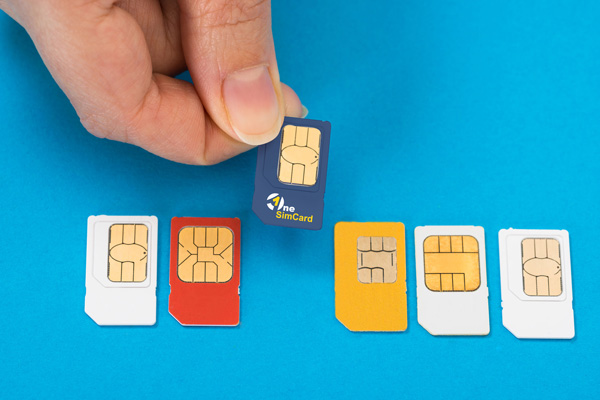
Introduction
The Internet of Things (IoT) has revolutionized industries by enabling seamless communication between devices. At the core of this connectivity are SIM (Subscriber Identity Module) cards, which allow IoT devices to connect to cellular networks. Each IoT SIM card comes with a unique ICCID (Integrated Circuit Card Identifier)—a critical component for managing and identifying SIM cards across global networks.
In this blog, we’ll explore what an ICCID is, how it is created, and what the numbers in an ICCID mean. Understanding ICCIDs is crucial for businesses deploying IoT solutions, as they help in managing large fleets of connected devices.
What is an IoT SIM Card ICCID?
An ICCID (Integrated Circuit Card Identifier) is a unique number assigned to every SIM card, including those used in IoT devices. This identifier plays a vital role in distinguishing SIM cards across different networks and regions. Unlike the IMSI (International Mobile Subscriber Identity), which identifies the subscriber, the ICCID is linked to the physical SIM card itself.
The ICCID is embedded in the SIM card during manufacturing and is stored in its memory. It is also printed on the SIM card body so that network operators and users can easily reference it. The ICCID follows a standardized format defined by the International Telecommunication Union (ITU-T) in the E.118 recommendation.
IoT SIM cards, which are often used in smart meters, connected vehicles, industrial sensors, and other machine-to-machine (M2M) applications, rely on ICCIDs for inventory management, provisioning, and network authentication.
How are ICCIDs Created?
ICCID numbers are generated following a specific international standard to ensure uniqueness and consistency across the global telecom ecosystem. The structure of an ICCID adheres to the ISO/IEC 7812 numbering system, which is also used for bank card numbers.
Here’s the process of how ICCIDs are created:
- Assignment of the Issuer Identification Number (IIN):
- The first few digits of the ICCID are assigned to the telecom provider or SIM card issuer.
- This ensures that no two operators generate conflicting ICCIDs.
- Encoding of the Unique Account Number:
- The SIM card manufacturer assigns a unique serial number to each SIM card.
- This number helps in tracking and differentiating SIMs produced in the same batch.
- Incorporation of a Checksum Digit:
- To ensure the validity of the ICCID, a Luhn algorithm is applied to generate the final check digit.
- This helps in detecting errors in the ICCID when it is entered manually or scanned.
Once generated, the ICCID is permanently stored on the SIM card and cannot be changed.
Breaking Down the ICCID Number
An ICCID is typically 19 to 20 digits long and follows a structured format:
Example ICCID:
89 12 3456 7890 123456 7
Each part of the ICCID has a specific meaning:
- Industry Identifier (2 digits) – “89”
- The first two digits always start with “89”, which indicates that the card is used for telecommunications.
- This is a globally standardized prefix.
- Country Code (1–3 digits) – “12”
- The next set of numbers represents the country code, assigned by the International Telecommunication Union (ITU).
- It helps identify the country where the SIM card was issued.
- Issuer Identification Number (IIN) – “3456”
- This segment identifies the mobile network operator (MNO) or SIM card issuer.
- Different telecom providers have unique IINs.
- Unique SIM Card Serial Number – “7890 123456”
- This is a manufacturer-assigned unique number for each SIM card.
- It ensures that no two SIM cards have the same ICCID.
- Checksum Digit – “7”
- The last digit is a mathematically calculated check digit using the Luhn algorithm.
- This helps prevent errors when entering the ICCID manually.
Why are ICCIDs Important for IoT?
ICCID numbers play a crucial role in IoT deployments. Here’s why they matter:
1. Device Authentication & Security
- Networks use ICCIDs to authenticate and register IoT SIM cards, ensuring that only authorized devices connect to the network.
2. Remote SIM Management
- With large-scale IoT deployments, companies use ICCIDs to track and manage SIMs remotely through SIM management platforms.
3. Network Provisioning & Roaming
- ICCIDs help in identifying SIMs that are configured for specific network access, including multi-network and global roaming IoT SIMs.
4. Troubleshooting & Customer Support
- If an IoT device experiences connectivity issues, network operators can use the ICCID to diagnose and resolve problems.
5. Compliance & Inventory Tracking
- Businesses with thousands or millions of IoT SIMs use ICCIDs to ensure compliance with telecom regulations and keep accurate inventory records.
ICCID vs. IMSI vs. IMEI: What’s the Difference?
While ICCID, IMSI, and IMEI are all used in telecom networks, they serve different purposes:
| Identifier | Stands for | Purpose | Assigned to | Can Change? |
|---|---|---|---|---|
| ICCID | Integrated Circuit Card Identifier | Identifies the physical SIM card | SIM Card | No |
| IMSI | International Mobile Subscriber Identity | Identifies the mobile subscriber | Linked to a SIM profile | Yes (with eSIMs) |
| IMEI | International Mobile Equipment Identity | Identifies the device hardware | Device (e.g., phone, IoT module) | No |
For IoT applications, ICCID is crucial for managing SIM inventory, while IMSI is essential for network authentication, and IMEI helps in tracking devices.
Conclusion
ICCID numbers are an essential part of IoT SIM cards, enabling seamless connectivity and efficient SIM management. By understanding their structure, creation process, and significance, businesses deploying IoT solutions can better manage their SIM inventories and ensure secure, reliable network connections.
As IoT adoption continues to grow, ICCIDs will remain a key component in identifying and authenticating millions of connected devices worldwide. Whether you’re managing a fleet of smart meters, connected vehicles, or industrial sensors, keeping track of ICCIDs ensures a smooth and secure IoT deployment.
Want to learn more about IoT connectivity and SIM management? Contact us HERE, & stay tuned for more insights on optimizing your IoT deployments! 🚀
